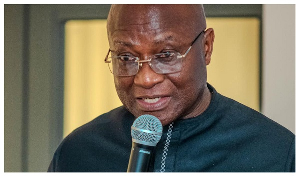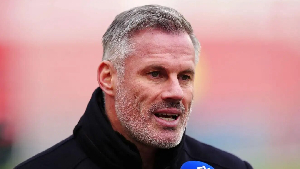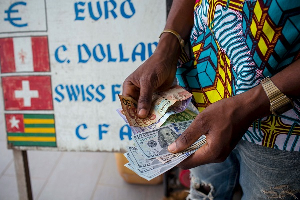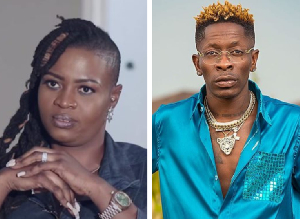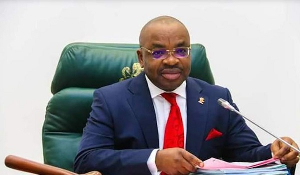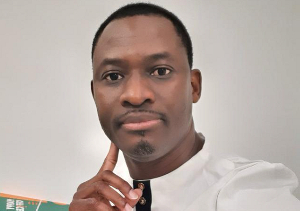Some major highlights of Dr.Kofi Boahene’s innovative surgeries performed around the world
Mexico
Dr. Boahene and his team of local Mexican surgeons operated on a group of Zapotec and Mixtec Indians, reportedly the two largest linguistic groups inhabiting the Oaxaca mountainous region of Mexico. These groups are known for a common birth defect called microtia, a congenital condition he describes as (Boahene, p. 171) “children born with a partially formed or non-existent external ear.”
He adds (Boahene, p. 171): “Our mission focus was to build ears for these children. The procedure begins with harvesting a piece of cartilage from a rib and artistically sculpting it into the shape of an ear. The sculpted cartilage is then buried under the skin where the ear should have been developed. Over several months the skin shrinks around the sculpted cartilage to form a natural-looking ear.”
Liberia
Under the auspices of the non-profit group Children’s Surgery International, Dr. Boahene and his two of his colleagues Drs. Moore and James Sidman, traveled to Liberia, and while there they repaired lip and palate defects (Boahene, p. 173-174): “Our van had just rolled into the hospital yard…A child of about ten years had fallen from a tree and arrived at the hospital with a three-foot tree branch sticking out of both sides of his neck…
“With no x-ray or scan to tell us exactly where the branch was, we rushed him to the operating room, sawed off one end of the stick and gently pulled the rest out the other side. He was one lucky little fellow because none of the vital blood vessels and nerves had been injured and he was able to leave the hospital the next day.
“…By midday a disturbing pattern was emerging. There were a surprising number of children between five and seven with unrepaired lip and palate defects. These defects are usually repaired within the first year of life…Among the older children we saw, those between ten and sixteen, there were missing ears or noses that had been hacked off with machetes. Like the boy with the stick through his neck, they were lucky to be alive, and those who found us were lucky to have the chance to have ears and noses rebuilt for them.”
America
Boahene (p. 175): “…One day he asked me to help with a patient from the homeless community who been (sic) diagnosed with cancer of the tongue. We needed to take out his tongue, after which I would try to fashion a useful tongue-like structure with tissue and nerves from other sites from his body.
“Besides his tongue, his teeth were in such terrible condition he had packed his bleeding, weeping gums with bunched-up scraps of newspaper. As I pulled out the soaked wads it was hard to keep from gagging at the stench of rotting gum and diseased teeth…”
Rwanda
Boahene (p. 176): “…One of these occurred in Rwanda involving a child of about eleven years old whose condition at first appeared to be uncomfortable and discomforting to look at but quickly turned into a life-or-death procedure.
“This boy had a tumor growing in one of his nostrils. The people on the ground in Rwanda sent a CT scan and I received a diagnosis on the nature of growth…It was a straightforward procedure with little reconstructive surgery necessary. I didn’t twice about it.
“We arrived in Rwanda within a week or so and got a chance to examine the boy. I was shocked to find that in such a short time the tumor had grown much bigger and was now protruding out of his nose. His case had become a little complicated, so we arranged to do the surgery in a private hospital where the equipment would be more sophisticated.
“…Although it was clear he was in some pain, he made eye contact and was engaged when we asked him some basic questions…
“When I went to see the boy on Wednesday, I was stunned. In those few days the tumor had doubled in size. The boy was listless, lifeless—literally on death’s doorstep. …The tumor was rapidly dividing and growing its own network of blood vessels…
“After an emergency transfusion, we changed the plan for how we were going to do the surgery and quickly got that tumor out. Within two hours, the procedure was successfully completed…By the end of the week, he was sitting up, eating, talking, back to being a normal kid with a nose that, when healed, would not look any different from any other kid’s.”
America
Boahene (p. 166-167): “In 2003 I became a chief resident and instructor at the Mayo Medical School, a yearlong position during which I was responsible for my own patients as well as teaching junior residents and medical students. As a young doctor spreading my wings, my first case was challenging. A five-year-old Amish girl had a tumor so massive it had consumed her entire lower jaw. It had reached the point that it was interfering with her ability to breath.
“Her family brought her to the emergency room in the middle of the night and I was called in to figure out how best to treat her. I decided we needed to operate right away. I performed a tracheostomy, making a surgical opening through her neck into her windpipe and inserting a temporary breathing tube to bypass the tumultuous obstruction.
“The biopsy results were a relief—the tumor was benign and unlikely to end her life. But the treatment would require removing her entire lower jaw and replacing it with healthy bone tissue harvested from her leg. I had participated in this type of surgery many times on adults, but never on such a young child.
“The orthopedic surgeons we consulted assured us that removing a piece of bone from the child’s leg was unlikely to limit her long-term growth. So with the help of one of many mentors, we removed the tumor, harvested the fibula, and used that bone tissue to completely build her a new jaw bone. The procedure was a success and I have since performed a number of similar jaw reconstructions in children, some as young as two years.”
Bangladesh
Boahene (p. 179-180): “One of my own favorite stories, although bittersweet, is about a mother in Bangladesh whose son had a cleft lip I repaired. It was a routine surgery and I came out of the operating room to meet with her. A translator explained that the operation had been a success and she could expect her child to live a normal life….
“But upon hearing it, the mother burst into tears that were clearly not joyful. I asked the translator to tell her, ‘No, this is good news! There were no complications and everything is going fine. Your son is perfect.’
“I was certain there had been a misunderstanding. But upon hearing the news a second time, her crying devolved into the most intense wailing, the sort associated with profound grief. Nothing we said would calm her. It was nearly a half hour before she had exhausted herself and could speak in between sobs.
“As the translator listened his shoulders slumped. When the mother finished, he turned to me, his eyes shimmering.
“‘Dr. Boahene, it appears she had several children before this who were born with this condition and died as a result. She is grateful but she is mourning the babies she lost that could have been saved.’
“It was a humbling moment that moved me as well.”
America
Boahene (p. 216-218): “My first big breakthrough occurred in 2008. It involved a child and it began by happenstance. A pediatrician was treating a one-year-old boy for a routine problem when he noticed the boy’s three-year-old brother, who was along for the ride, had a smile that was slightly askew. The parents seemed unconcerned but the doctor’s instincts told him a scan was in order.
“His consciousness was rewarded when the scan revealed a tumor in the child’s skull base that was impinging on a facial nerve…If the tumor continued to grow, however, it would eventually destroy the nerve and his face would be paralyzed. Removing the mass would involve severing the nerve…
“In consulting with the surgeon who was going to remove the tumor, I discussed two scenarios.
“‘I can rewire the facial nerve first, to bypass the tumor so you don’t have to worry about it during your procedure. Or, you can go ahead with the surgery and after you’ve removed the tumor, it’s possible to leave both ends of the severed nerve accessible. I can repair the gap by transferring nerve tissue from elsewhere.
“At the time, nerve transplant and transfer surgeries were beginning to offer hope to patients whose extremities had been paralyzed or damaged in accidents. Moving nerve is common surgery in children who are born with a brachial plexus injury, which can occur during a breech birth. When force is required to extract the baby from the womb, the nerves from the neck going to the arm can tear, causing weakness or paralysis. The repair involves moving nerves from a muscle that is not so vital to one that is, like an arm or a hand that needs to be able to grip things.
“In this case, we decided to go ahead with the surgery, remove the tumor and fix the nerve gap that would result. But when the tumor was removed, the portion of the nerve coming from the brainstem was completely gone. It would not be possible to bridge the gap.
“I had already thought about that possibility, and how I might connect the loose end of the nerve where it connected to the facial muscles to a different nerve. For example, there is a muscle that allows us to chew that can be connected to a severed facial nerve in such a way that clenching your teeth produces a smile. It is like wiring a light switch except nerves take a long time to grow.
“In this case I decided to connect the remaining portion of the boy’s facial nerve to a nerve that controls his tongue…
“About three months after the surgery, I woke up very early one day and was checking my email when I spotted one from the address of the boy’s father. It had been sent in the middle of the night, suggesting a crisis. I opened it bracing for bad news. ‘Dear Dr. Boahene,’ it began. ‘Tonight, for the first time in my son’s life, I really saw him smile.’”
Peru
Boahene (p. 220): “Some children are born without the ability to smile…This disease is called Moebius syndrome. The nerves or muscles that normally move the face do not properly overlap.
“Each year I travel to Peru to work with local surgeons helping restore smiles to children born this way. During one such visit I asked a group of about fifteen children with Moebius syndrome to assemble for a photo. As I reflexively do when taking photos of my own kids, I asked them to smile for the camera, forgetting for a moment that they could not.
“What happened next was emotionally overwhelming. In the last row a chubby, boisterous nine-year-old put his fingers in his mouth and pulled the corners to stimulate a smile. He did this so naturally and flawlessly it was clear he had done it a million times. His face glowed with innocent childish mirth. In that instant he stole my heart. I vowed to give him a real smile, which we did.”
Germany
Boahene (p. 222): “Anna was a six-year-old from a small town in Germany who was born with Moebius syndrome. Her dream was to be able to smile before starting her school years.
“I saw her on one of my trips to Germany as a visiting professor. Anna and her parents spoke only German, challenging me to reach back into my memory for the German I learned in Ghana when I thought I would be attending a German medical school.
“They told me that playing with other children her age was difficult. She could not smile, but she could vocalize laughter, which made her seem quite odd. Together with my German colleagues we transplanted a small muscle from her upper thigh and rewired some nerve…The operation was a success and six weeks later she was smiling for the first time in her life. It was the shortest recovery of movement I have recorded so far.”
America
Boahene (p. 155): “The case that helped define my future subspecialty began with a call to consult on a newborn who had been transferred to our hospital from another. Among other abnormalities, this child was born with no nose, just a small stump of fleshy tissue, a condition called proboscis lateralis.
“We designed a surgical technique to create a nose and this child became my patient for the next four years as we continued to refine the structure until he had a nearly normal-looking nose. It was a satisfying outcome and one that attracted enough attention that I was invited to publish the clinical description of the surgical repair in a medical journal. If I had any doubts about facial reconstructive surgery, that child erased them once and for all.”
Skull base surgery: Dr. Kofi Boahene's surgical methodology
Clinical experience has taught Dr. Boahene and his colleagues, including Dr. Alfredo Quiñones-Hinojosa, to avoid working around the brain given the potential risks of skull-base surgery. This is because among other reasons, this body of procedures involving skull-base surgery frequently tends to get too close to the brain stem and spinal cord (Boahene, p. 206), very sensitive regions of human anatomy.
This poses the additional problem of removing a tumor that grows in the neighborhood of the brain stem. Thus successfully negotiating out of this anatomic and physiologic complication as far as surgery is concerned, is the intrusive presence of the totality of cranial nerves and major veins and arteries populating this region, with these resourceful networks of arteries and veins serving as the main nourishing tributaries of the brain, complex arrangements that call for circumspection on the part of the surgeon and tactical avoidance of surgical indiscretions with the potential to disrupt the natural flow of blood to this sensitive neighborhood of the brain stem.
What this means, overall, is that precision is a highly valued surgical goal in these complex situations, a subject Dr. Ben Carson takes up in Gifted Hands. Thus Dr. Boahene’s solemn acknowledgment that otolaryngology is “as complex and competitive as neurological (brain and nervous) surgery…” falls into place (Boahene, p. 146). What is more, his confident defense of his specialties and surgical challenges in juxtaposition with neurological surgery is quite admirable—to say the least (Boahene, p. 190-194, 206, 215-216). Finally, his technical discussion of body dysmorphic disorder (BDD) in relation to the outcomes of his surgical procedures is a clear indication of an inspiring authority in total control of his niche of expertise.
Yet, he has not been found wanting insofar as coming up with innovative surgical solutions to treat his patients (Boahene, p. 210), and as he puts it “get to tumors in very hard-to-reach areas in the skull.” This has won him accolades and admiration in addition to national and international recognition for his innovative inventiveness, following which he has been invited to (Boahene, p. 210) “present my techniques at international conferences and often been singled out for recognition. As a result, people who have heard or read about me now seek me out for consultation.”
It is, however, interesting to note that Dr. Boahene never mentions or discusses the important role of collateral circulation in this complex anatomic and physiologic matrix, specifically about his expert contention that exercising extreme circumspection or surgical avoidance is in order when operating around this delicate network of arteries and veins located beneath the brainstem. He does, however, mention the complex network of nerves and its anatomic habitation of the face, arguing that any anatomic or physiologic interruptions or breaks in the natural flow of this network can result in facial paralysis. When this happens, he maintains, the ability to communicate emotions like happiness disappears particularly in the case of children (Boahene, p. 206).
In spite of his expert reservations, he still maintains a set of technical procedures in his skull-base surgical toolbox includes (Boahene, p. 206). These are as follows: 1) “removing benign or cancerous growths and abnormalities on the underside of the brain and the first few vertebrae,” 2) reconstructing the face by “replacing or substituting lost tissue and bone, repurposing healthy tissue, rewiring nerves…,” 3) “closing the surgical sites with very fine sutures and other methods that will leave the least scarring, and tucking them into wrinkles and creases where they will be least noticed.”
No wonder his surgical techniques defy a traditional piece of medical wisdom that says nerves cannot grow back (Boahene, p. 222): “It wasn’t so long ago that common medical wisdom dictated that nerves cannot regenerate. But a year after I have performed one of these procedures and have to go back into the same area to do something else I can tell that the nerves I connected have grown. Nerves that started out as thin as a strand of hair will have tripled in size.”
And no wonder this competitive genius of the scientific world is exporting his skills and medical wisdom to faraway places, Europe among others (Boahene, p. 56), like Dr. Carson did when he too assumed the global leadership of pediatric neurosurgery during his active tenure of service to humanity. Here the point of contact between However Far the Stream Flows and Dr. Carson’s Think Big is clear, clear in the sense of translating possibility thinking and optimism into creative products for the betterment of humanity. Dr. Boahene has more to learn from Dr. Carson nonetheless. Of course, decent great minds think alike and learn from each in the interest of humanism.
Remarks
Dr. Boahene wants to give back to Africa in a big way as others—just as his good Samaritans—did for him in his moments of protracted frustrations. As a result, in 2014 he established a non-profit organization called the Foundation for Special Surgery (FSS) to pursue this noble goal (see http://foundationforspecialsurgery.org/). He says he wants to see FSS (Boahene, p. 234) “provide the highest level of sub-specialized surgical care to patients in sub-Saharan Africa”
Regarding the organization’s mission, he spells it out thus (Boahene, p. 234) “the vision of the foundation is to become a leader in training the next generation of sub-specialized surgeons in the region by enlisting the participation of world-class surgeons from the US, Europe, Africa, Latin America, and Asia.”
Indeed, stemming the tide of brain drain from Africa is one of the underlying reasons for creating his foundation. “The developing world needs to nurture its own internists, diagnosticians, anesthesiologists, surgeons and nurses and to provide access to professional facilities and equipment,” he explains (Boahene, p. 234), adding, “For this reason, my top goal is to raise the funds to build a specialty surgical hospital in Ghana. It will be a place where young African men and women can receive specialized training with which they will be able to make a living providing world-class surgical care to their fellow Ghanaians and West Africans.”
He concludes (Boahene, p. 234): “I am convinced that an approach that trains specialists locally in Africa is the most effective way of transferring and building expertise with the least pressure of brain drain (our emphasis).”
Opinions of Tuesday, 9 January 2018
Columnist: Francis Kwarteng







